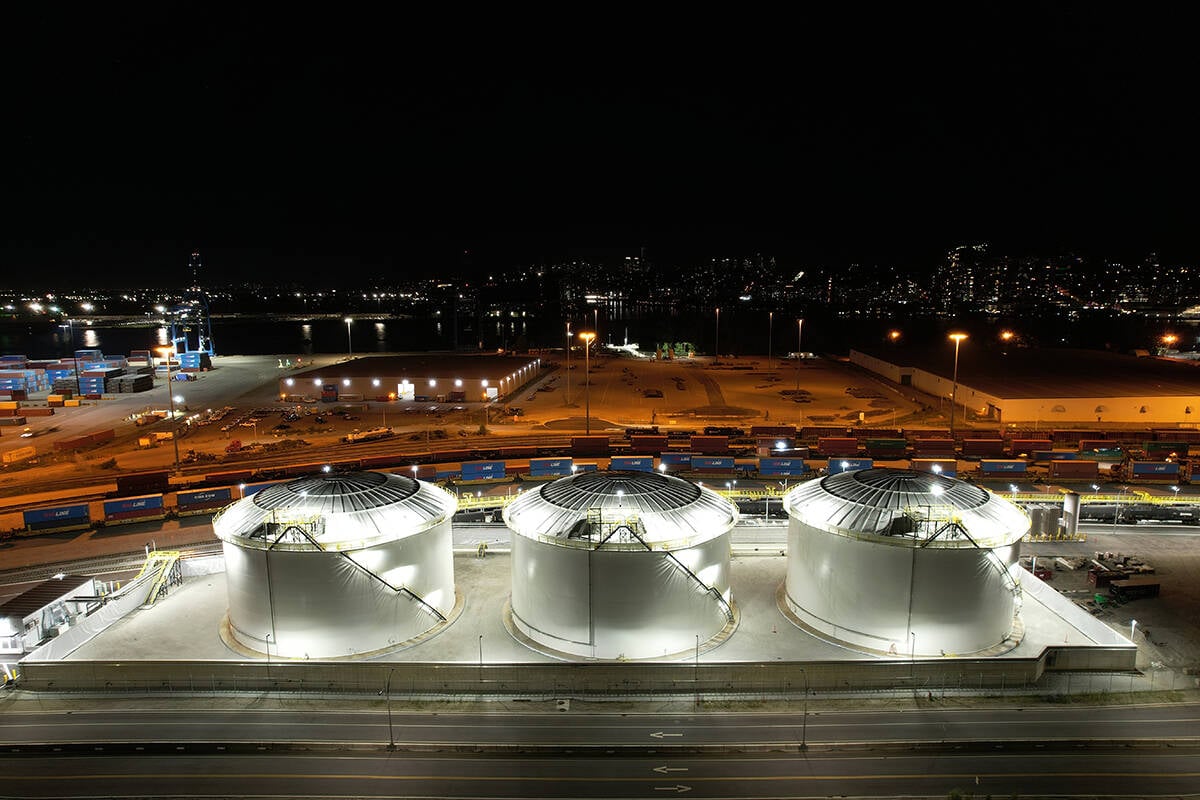John Duvenaud remembers the early 1980s when Western Canada was growing 150,000 acres of field peas.
That seemed like a lot of peas at the time – but it pales in comparison to what is expected this year and in the coming decade.
Duvenaud, who publishes the Wild Oats Grain Markets Advisory newsletter, expects field pea production to reach 2.5 million acres this year.
Others say Western Canada’s field pea crop could double within a decade.
“Every year they keep going up and they keep getting used up,” said Duvenaud.”I imagine the market will slow down a bit, but I bet they’ll move anyways.”
Read Also

Canola oil transloading facility opens
DP World just opened its new canola oil transload facility at the Port of Vancouver. It can ship one million tonnes of the commodity per year.
Part of the optimism about field peas is driven by the expanding hog industry in Western Canada.
As a feed, field peas are competing successfully with soybeans imported from the United States.
Peas, with their nitrogen fixing ability, are also becoming increasingly important in crop rotations, especially for canola growers concerned about disease.
Pea prices, compared with other crops, are also keeping the attention of growers.
“I think farmers are expecting prices to be as good or better than they have been for the past couple of years,” said Janette McDonald, general manager of Alberta Pulse Growers.
Although more acres will be planted to field peas this year, it may not mean a jump in pea production when compared to last year.
Growers last year produced exceptional yields, with the largest amount of production taking place in Saskatchewan.
“We might not have more peas to play with if we revert to the normal yields,” said Martin Chidwick, a senior trader with XcanGrain Pool Ltd.
During the March 16 annual meeting of the Manitoba Pulse Growers Association, Chidwick used graphs and an overhead projector to illustrate the growth of field pea production in Western Canada.
The region produced 970,000 tonnes of peas in 1993-94. Chidwick expects production this year to reach 2.25 million tonnes, an increase of 232 percent in six years.
He also suggests that pea production could reach five million acres within seven to 10 years.
Duvenaud and Chidwick believe lentil and chickpea acres will also increase this year.
Duvenaud expects lentil acreage to increase 40 percent this year compared to a year ago.
Chidwick thinks 500,000 acres may get planted to chickpeas this spring, with the bulk of that in Saskatchewan.
“The dynamics are exciting,” he said. “Last year we seemed to be shipping year round and we seem to be doing the same today.”
















